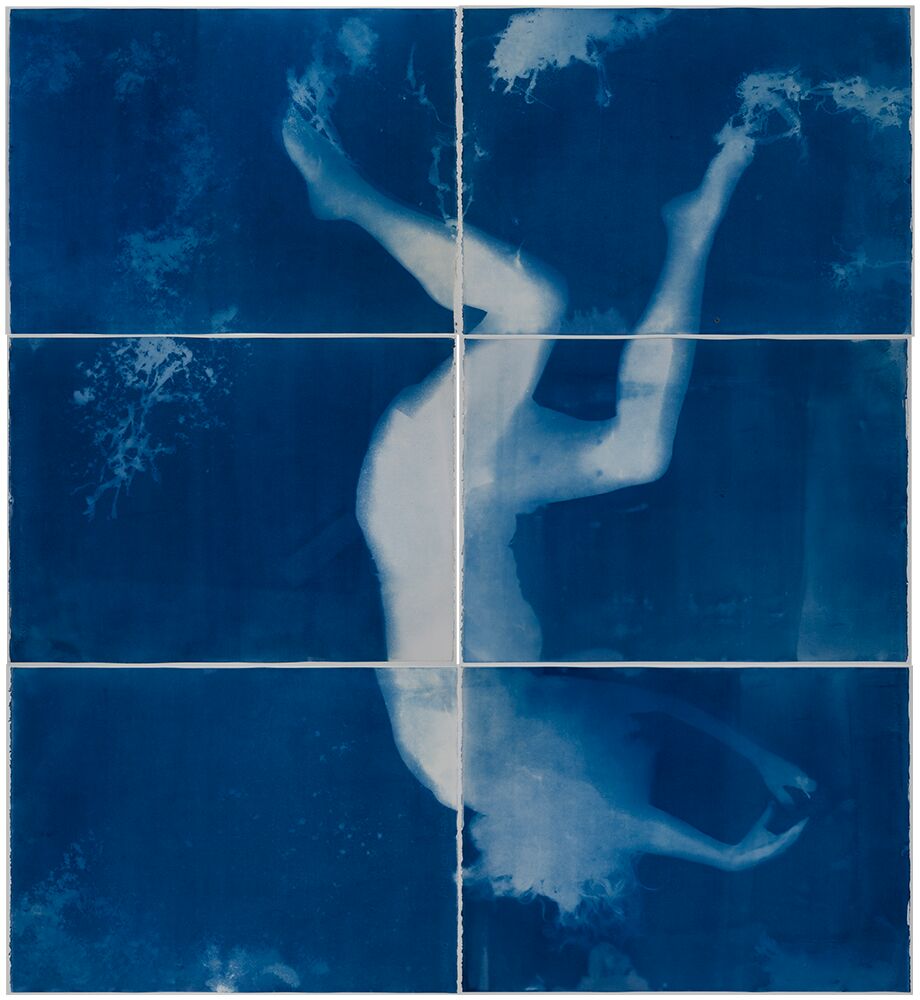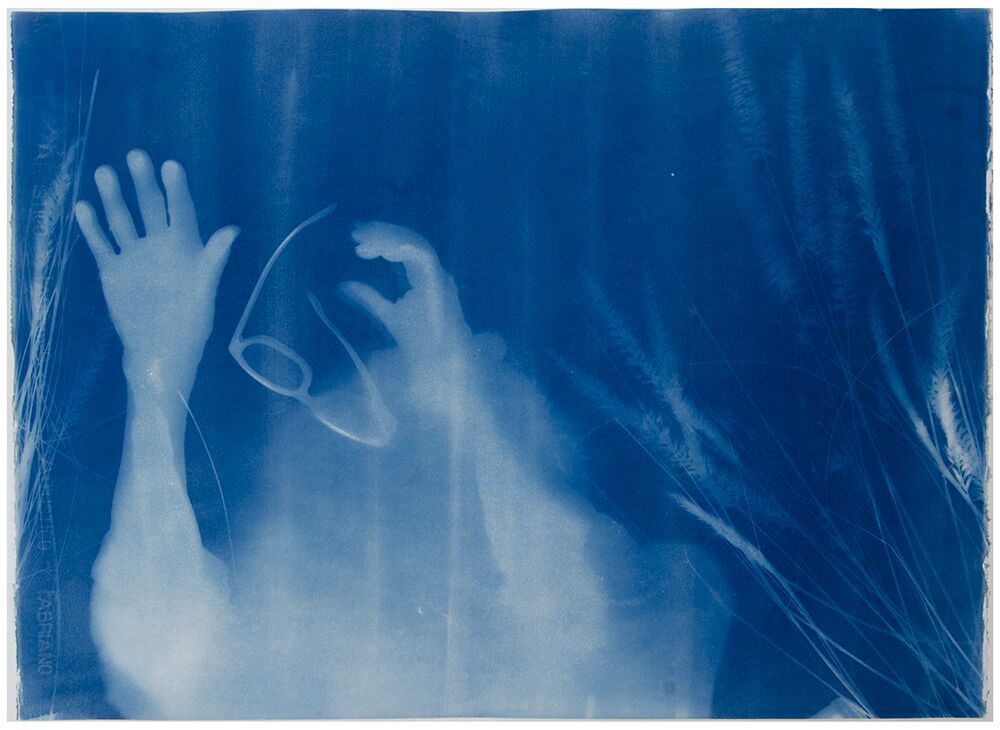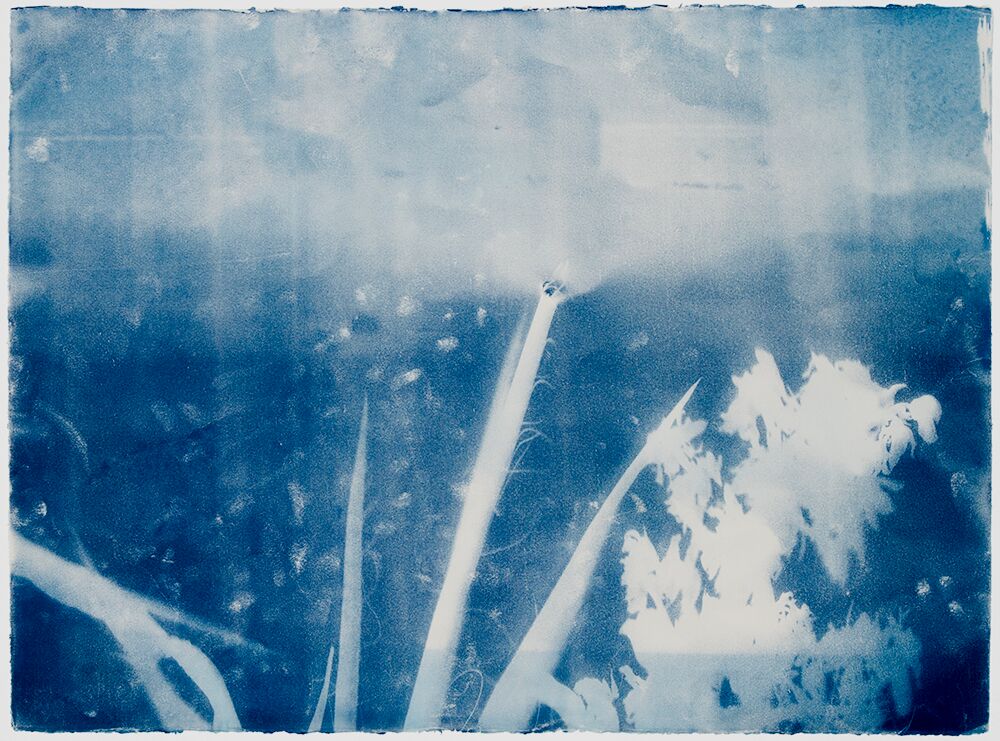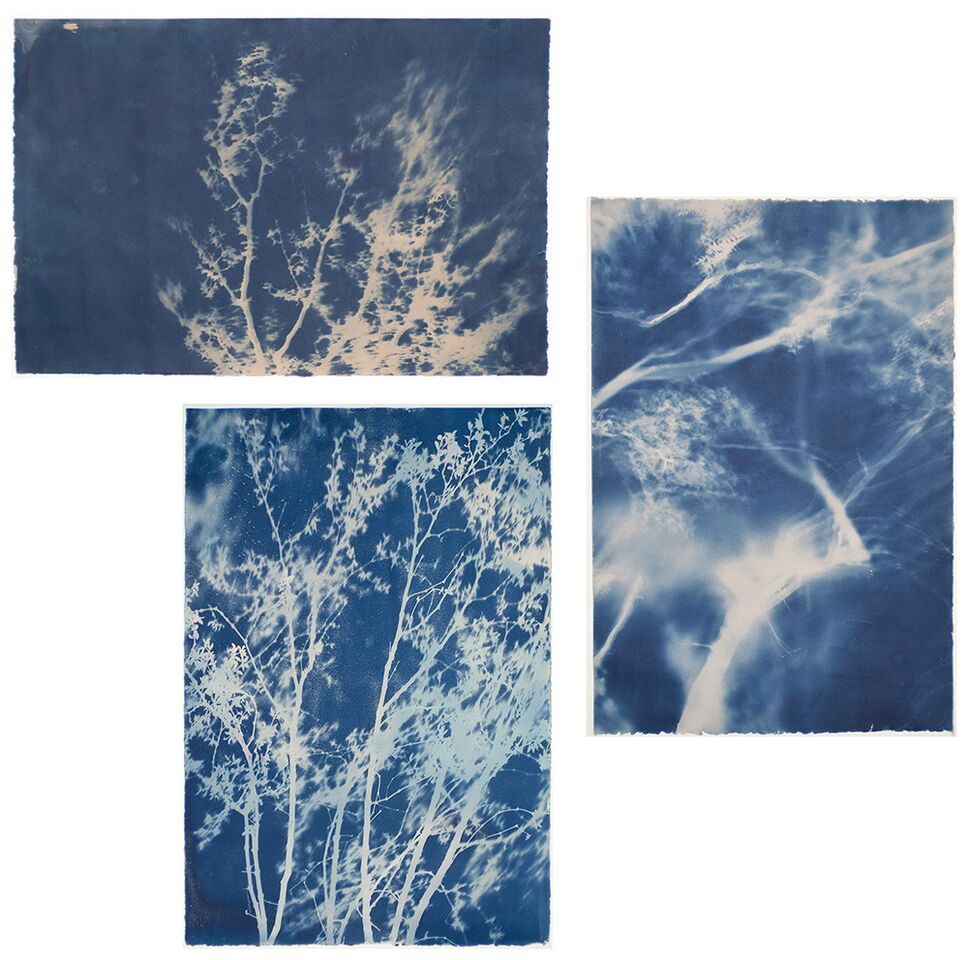Cyanotype – Paper, Iron salts, sunlight, water, wind
66″ h x 60″ w
Cyanotype – Paper, Iron salts, sunlight, water, wind
22″ h x 30″ w
Print page number 1 from artist book THIS LAND – Photograms by Meg Madison, binding by Charlene Matthews
30″ h x 22″ w (opened 30″ h x 44″ w)
Cyanotype on fine art paper
42″ h x 42″ w (each sheet 15″ h x 22″ w)
Artist Statement
I use photography to conceptually examine memory and ritual: A photograph is evidence of a moment, that moment is transformed into an object and that object replaces memory of that moment. The confusion between viewing the object and remembering the real event triggered the research of family rituals. The “12.26” series (2005) followed Christmas trees after the holiday to recycling centers, which in turn highlighted land as part of ritual and as furniture of memories. I have since worked on projects about land use and land ownership. Recently, I have been using camera-less photography to make cyanotype sun prints that explore the land, our connection to it, feminism and aging.
THIRST, A Performance at the Water
Suddenly the first Thirst comes glistening out of the water, the first Adoration comes back, such a Thirst was only known in paradise, coming out dripping wet, Passion recovered, a Thirst as exciting as love, holding up both palms full of water.
—Hélène Cixous, Limonade tout était si infini 1982
The work starts with water, the earth and the body’s connection to both. Dispelling the notion that water comes from the tap, it is important to go to a natural site of water. The water becomes a part of the chemical compound on the paper and, once dried, the residue of the LA River or salt of the Pacific Ocean remain on the paper. It is part of what makes the chemical change and it is what remains.
Inspired by the earlier civilization that revered elders, I bring an elder to the natural site. At the water’s edge they lay their body on sheets of coated paper; as the sun exposes the paper, we talk about aging and the invisibility that comes with being 60 and older. After exposure to the sun, I take the pieces of paper and develop them in the nearby water. Once in the water, the wind, the waves or the current move the paper causing marks of distress, crimps, folds, scratches and algae stains. The resulting blue image is evidence of a physical interaction—the collaborator and the artist making the print, talking about aging—and is infused with a celebration of life.
THIS LAND
I roamed and rambled and followed my footsteps
To the sparkling sands of her diamond deserts,
And all around me, a voice was sounding:
This land was made for you and me
…
In the shadow of the steeple I saw my people,
By the relief office I seen my people:
As they stood there hungry, I stood there asking
Is this land made or you and me?
—Woody Guthrie
This series represents my commitment to creating, in real size, a sun-print of each of the plants on a five-acre homestead parcel in the high desert near Black Lava Butte and Flat Top Mesa. My interest in this project began when I attempted to plant my first tree on the property, a native honey mesquite raised from seed. The direct contact with the earth—the feeling of the dirt running through my fingers, my back breaking from digging up the rocks that have settled in this land, once called “Ate’ivyat” or rocky place by the Serrano people as I cleared space for the grey water pipe, the swale and the tree itself—were physical manifestations of my pledge to document every plant on the homestead.
The cyanotype coated paper is snuggled into shrubs, positioned between branches, burrowed next to cacti and braced against desert plant life on the five-acre parcel then exposed to the desert sun. The resulting print has touched the land and the land leaves marks, holes and scratches on the paper; no plant is damaged in the process.
Education
1987 BFA Film, San Francisco State University, CA
Bio
Meg Madison was born and raised in New York City and studied film at San Francisco State University with Trinh T. Minh-ha, who taught her “the things surrounding the subject are as important as the subject.” Madison came late to realize she was an artist with her first solo exhibition in 2005 at the Kristi Engle Gallery. This show titled “Surface Streets” was called by Holly Meyers in the Los Angeles Times “a poetic visual essay that explores that most common of daily activities—driving—with fresh eyes.”
Her work has been exhibited in galleries, non-profit spaces and museums in Los Angeles and beyond. Madison is part of the collective OIMOA (Optical Image Makers of America), the Eco-Art Collective of the Southern California Women’s Caucus for Art as well as working with other artist groups, including the Association of Hysteric Curators, GroupLA2008, Kristi Engle Gallery, LAAA, LAMAG at Barnsdall, and Photo LA.
Contact Email




